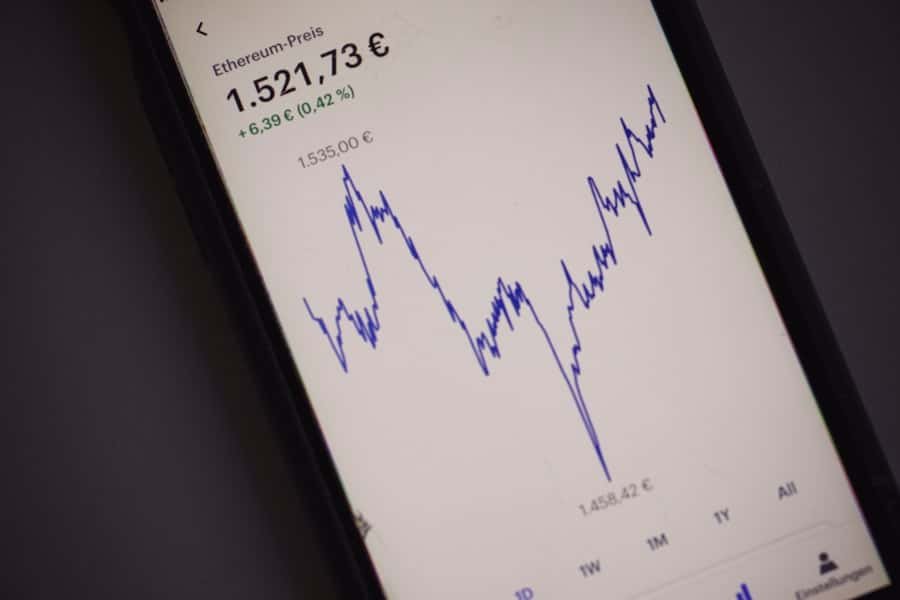Long-term and short-term investing strategies differ significantly in their approach and objectives. Long-term investing involves holding assets for extended periods, typically five years or more. This strategy aims to capitalize on compounding returns and weather market volatility over time.
Investors following this approach often adopt a buy-and-hold mentality, focusing on the overall growth potential of their investments rather than short-term market fluctuations. Short-term investing, conversely, involves trading assets within shorter timeframes, usually less than a year. This strategy seeks to profit from immediate market movements and price fluctuations.
Short-term investors actively monitor market trends and engage in frequent trading to capitalize on short-lived opportunities. Long-term investing requires patience and discipline, as investments may take years to reach their full potential. This approach is generally less concerned with day-to-day market fluctuations and more focused on long-range planning and growth.
Short-term investing demands a more active approach to market monitoring and decision-making. Investors using this strategy aim to generate quick profits by taking advantage of short-term market trends and price movements. Both long-term and short-term investing strategies have their own set of benefits and risks.
Understanding the differences between these approaches is crucial for investors to make informed decisions about their investment strategies and align them with their financial goals and risk tolerance.
Key Takeaways
- Long-term investing focuses on holding investments for an extended period, while short-term investing involves buying and selling within a shorter timeframe.
- Benefits of long-term investing include potential for higher returns, compounding interest, and reduced impact of market volatility, while risks include lack of liquidity and potential for underperformance.
- Short-term investing offers the potential for quick profits and flexibility, but comes with higher transaction costs, increased market risk, and potential for emotional decision-making.
- Strategies for long-term investing include diversification, dollar-cost averaging, and focusing on quality investments, while short-term strategies may involve technical analysis, momentum trading, and risk management.
- Diversifying a portfolio for long-term goals may involve a mix of stocks, bonds, and real estate, while short-term goals may benefit from a focus on liquid assets and cash reserves.
- Factors to consider when choosing between long-term and short-term investment strategies include financial goals, risk tolerance, time horizon, and market conditions.
Benefits and Risks of Long-Term Investing
Higher Returns through Compounding
One of the key advantages is the potential for higher returns over time. By holding onto investments for an extended period, investors can take advantage of compounding returns, where their initial investment grows exponentially as they reinvest their earnings. This can lead to significant wealth accumulation over the long term.
Riding Out Market Fluctuations
Additionally, long-term investing allows investors to ride out market fluctuations and avoid making impulsive decisions based on short-term volatility. This can help reduce the risk of losses and provide a more stable investment experience.
Challenges and Requirements
However, long-term investing also comes with its own set of risks. One of the main challenges is the lack of liquidity, as it may be difficult to access funds tied up in long-term investments when needed. Additionally, long-term investments are subject to market risks and economic downturns, which can lead to temporary declines in portfolio value. This requires investors to have a long-term perspective and the ability to withstand short-term market volatility without making hasty decisions. In conclusion, long-term investing offers the potential for higher returns and a more stable investment experience, but it also requires patience and the ability to withstand market fluctuations without making impulsive decisions.
Benefits and Risks of Short-Term Investing

Short-term investing also has its own set of benefits and risks. One of the main advantages is the potential for quick profits from market movements. By actively buying and selling assets within a short time frame, investors can capitalize on price fluctuations and generate immediate returns.
This can be appealing for investors looking to make quick profits or take advantage of short-term market trends. Additionally, short-term investing offers greater liquidity, as investors can quickly access funds tied up in short-term investments when needed. However, short-term investing also comes with its own set of risks.
One of the main challenges is the potential for higher volatility and increased transaction costs. Short-term investors may be more susceptible to market fluctuations and may incur higher trading fees from frequent buying and selling. Additionally, short-term investing requires a more active approach to monitoring the market and making quick decisions, which can be stressful and time-consuming.
In summary, short-term investing offers the potential for quick profits and greater liquidity, but it also comes with higher volatility and increased transaction costs. It’s important for investors to carefully consider these factors when deciding on their investment strategies.
Strategies for Long-Term Investing
For investors looking to adopt a long-term investment strategy, there are several key strategies to consider. One approach is to focus on diversification by spreading investments across different asset classes, such as stocks, bonds, and real estate. This can help reduce overall portfolio risk and provide more stable returns over the long term.
Another strategy is to regularly contribute to a retirement account or other long-term investment vehicle, such as a 401(k) or IRThis can help investors take advantage of tax benefits and build a substantial nest egg for the future. Additionally, long-term investors may consider adopting a buy-and-hold strategy, where they hold onto investments for an extended period regardless of short-term market fluctuations. This approach requires patience and discipline, as it may take years for investments to reach their full potential.
Finally, long-term investors should regularly review and rebalance their portfolios to ensure they remain aligned with their long-term financial goals. In conclusion, long-term investors should focus on diversification, regular contributions to long-term investment vehicles, a buy-and-hold strategy, and regular portfolio reviews to ensure they are on track to meet their long-term financial goals.
Strategies for Short-Term Investing
For investors looking to adopt a short-term investment strategy, there are several key strategies to consider. One approach is to focus on technical analysis by studying price charts and market trends to identify short-term trading opportunities. This can help investors capitalize on price movements and generate quick profits from market fluctuations.
Another strategy is to use stop-loss orders to limit potential losses and protect capital when trading in volatile markets. Additionally, short-term investors may consider adopting a momentum trading strategy, where they focus on buying assets that are showing strong upward momentum and selling assets that are showing weak downward momentum. This approach requires a more active approach to monitoring the market and making quick decisions based on short-term trends.
Finally, short-term investors should be mindful of transaction costs and tax implications when making frequent trades in their portfolios. In conclusion, short-term investors should focus on technical analysis, using stop-loss orders, momentum trading strategies, and being mindful of transaction costs and tax implications when making frequent trades in their portfolios.
Long-term Diversification Strategies
For long-term investors, diversification is key to reducing overall portfolio risk and achieving more stable returns over time. This can be achieved by spreading investments across different asset classes, such as stocks, bonds, real estate, and commodities. Additionally, long-term investors may consider diversifying across different industries and geographic regions to further minimize risk.
Short-term Diversification Strategies
In contrast, short-term investors focus on diversifying within a specific asset class or market sector to capitalize on short-term trading opportunities. This may involve spreading investments across different stocks or sectors that are showing strong upward momentum or have potential for quick profits.
Diversification Tools and Techniques
Both long-term and short-term investors can use various tools and techniques to diversify their portfolios. For instance, short-term investors may use options or futures contracts to hedge against potential losses in volatile markets. Ultimately, diversification is essential for reducing overall portfolio risk, and the approach should be tailored to individual investment goals and time horizons.
Factors to Consider When Choosing Between Long-Term and Short-Term Investment Strategies

When choosing between long-term and short-term investment strategies, there are several key factors to consider. One important factor is an investor’s financial goals and time horizon. Long-term investing may be more suitable for investors looking to build wealth over time and save for retirement, while short-term investing may be more suitable for investors looking to capitalize on immediate market opportunities or generate quick profits.
Another factor to consider is an investor’s risk tolerance and temperament. Long-term investing requires patience and discipline to withstand market fluctuations without making impulsive decisions, while short-term investing requires a more active approach to monitoring the market and making quick decisions based on short-term trends. Additionally, tax implications should be considered when choosing between long-term and short-term investment strategies.
Long-term investments may be subject to lower capital gains tax rates if held for more than a year, while short-term investments may be subject to higher ordinary income tax rates. In conclusion, when choosing between long-term and short-term investment strategies, it’s important for investors to consider their financial goals, time horizon, risk tolerance, temperament, and tax implications in order to make informed decisions about their investment approach.
If you’re interested in learning more about long-term vs. short-term investing, you may want to check out this article on The Econosphere’s website: The Econosphere. They offer a variety of resources and insights on investment strategies and economic trends that can help you make informed decisions about your financial future. Whether you’re a seasoned investor or just starting out, The Econosphere has valuable information to offer.
FAQs
What is long-term investing?
Long-term investing refers to holding onto an investment for an extended period of time, typically five years or more. This strategy is focused on achieving long-term financial goals and often involves less frequent trading and a buy-and-hold approach.
What is short-term investing?
Short-term investing involves buying and selling investments within a shorter time frame, typically less than one year. This strategy is often focused on taking advantage of short-term market fluctuations and generating quick profits.
What are the key differences between long-term and short-term investing?
The key differences between long-term and short-term investing include the time horizon, investment goals, risk tolerance, and trading frequency. Long-term investing is focused on achieving financial goals over a longer period of time, while short-term investing is more focused on taking advantage of short-term market movements.
What are some common long-term investment options?
Common long-term investment options include stocks, bonds, mutual funds, real estate, and retirement accounts such as 401(k)s and IRAs. These investments are typically held for many years to achieve long-term financial goals such as retirement savings or wealth accumulation.
What are some common short-term investment options?
Common short-term investment options include day trading, swing trading, options trading, and investing in short-term bonds or money market funds. These investments are typically held for a shorter period of time to take advantage of quick market movements.
What are the potential benefits of long-term investing?
The potential benefits of long-term investing include the opportunity for compounding returns, reduced impact of market volatility, and the ability to achieve long-term financial goals such as retirement savings or wealth accumulation.
What are the potential risks of short-term investing?
The potential risks of short-term investing include higher trading costs, increased market volatility, and the potential for higher taxes on short-term capital gains. Additionally, short-term investing requires more active management and can be more susceptible to emotional decision-making.
How should investors decide between long-term and short-term investing?
Investors should consider their financial goals, risk tolerance, and time horizon when deciding between long-term and short-term investing. Long-term investing is typically more suitable for achieving long-term financial goals, while short-term investing may be more appropriate for taking advantage of short-term market opportunities.








